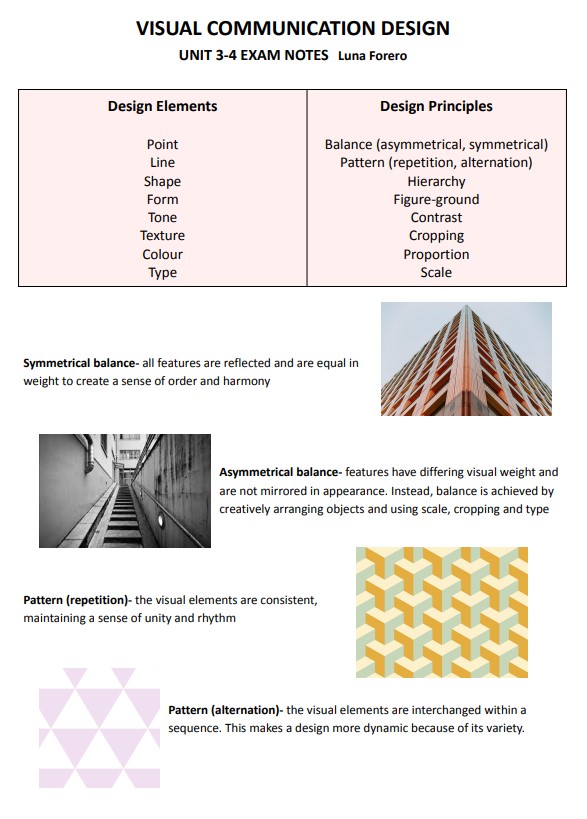Visual Communication Design Exam Notes (Grade A)
Summary:
The Visual Communication Design Exam Notes are compiled for a Visual Communication Design exam covering various topics including design elements and principles, techniques for gaining attention, methods, media, and materials, typography conventions, purposes of visual communication, contexts, final presentation formats, audience targeting, design thinking, factors influencing the design, and legal and ethical obligations such as intellectual property and technical drawings. The notes provide an overview of each topic with some key terms and concepts outlined for each.
Excerpt:
Visual Communication Design – Exam Notes
Design Elements
Point
Line
Shape
Form
Tone
Texture
Color
Type
Design Principles
Balance (asymmetrical, symmetrical)
Pattern (repetition, alternation)
Hierarchy
Figure-ground
Contrast
Cropping
Proportion
Scale
Symmetrical balance – all features are reflected and are equal in weight to create a sense of order and harmony.
Asymmetrical balance – features have differing visual weights and are not mirrored in appearance. Instead, balance is achieved by creatively arranging objects and using scale, cropping, and type.
Pattern (repetition) – the visual elements are consistent, maintaining a sense of unity and rhythm.
Pattern (alternation) – the visual elements are interchanged within a sequence. This makes a design more dynamic because of its variety.
Hierarchy – refers to the order in which design components are seen by an audience and how they are arranged (to the human eye features closer to the top of a design command more attention).
Figure-ground – used to differentiate the dominant and less dominant components of a design.
Figure – (positive space) is the most dominant feature.
Ground – (negative space) is what the figure is placed against.
Proportion – is the relationship between two or more features of a design component.
Proportion does not compare the size of an object, rather it is the ratio of height, width, or depth.
Scale – is the compared size of components in an overall design.


Reviews